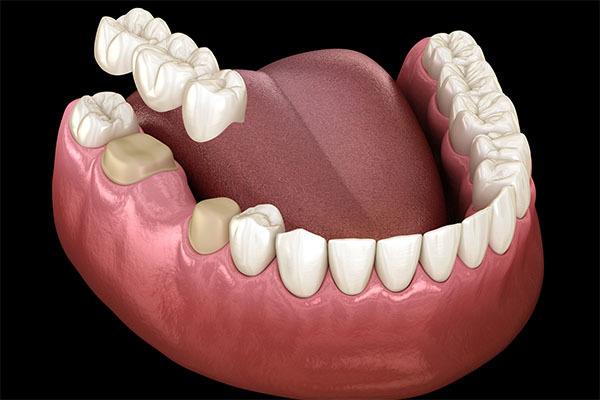
Dental bridges serve both functional and cosmetic purposes, filling gaps and restoring a complete smile. While they enhance aesthetics, they primarily fall under restorative dentistry. Unlike purely cosmetic procedures, dental bridges replace missing teeth, ensuring proper bite alignment, preventing shifting, and aiding in chewing and speaking. Covered by dental insurance, they are deemed necessary for oral health. Although they improve smile appearance, their main focus is functional restoration rather than purely cosmetic enhancement.

Are Dental Bridges Considered Cosmetic?
Dental bridges are a common dental treatment used to replace missing teeth. They are designed to fill the gap left by a missing tooth and restore the appearance and function of the smile. But are dental bridges considered cosmetic? In this article, we will explore this question and provide you with the information you need to know.
Understanding Dental Bridges
- Prosthetic Device:
- Dental bridges address the gap from missing teeth.
- Consist of dental crowns on adjacent natural teeth and false teeth filling the space.
- Materials:
- False teeth made from materials like porcelain, ceramic, or metal alloys.
- Custom-made to match natural teeth in color, shape, and size.
- Attachment and Stability:
- Typically held in place by dental cement or attached to dental implants.
- Provides stability and durability for effective tooth replacement.
The Cosmetic Aspect of Dental Bridges
- Restorative and Cosmetic Dentistry:
- Dental bridges contribute to both restorative and cosmetic dentistry.
- Restorative: Replaces missing teeth, restores function, and prevents oral health issues.
- Cosmetic: Enhances the appearance of the smile, creating a harmonious look.
- Functional Benefits:
- Restores the ability to chew and speak properly.
- Essential for overall oral health by preventing further dental problems.
- Aesthetic Enhancement:
- Fills gaps for a complete and harmonious smile.
- Natural-looking materials ensure seamless blending with surrounding teeth.
- Self-Confidence:
- Dental bridges significantly improve the appearance of a smile affected by missing teeth.
- Enhances self-confidence through a beautiful and natural-looking smile.
Benefits of Dental Bridges
Now that we understand the cosmetic aspect of dental bridges, let’s explore the benefits they offer beyond aesthetics.
1. Improved Chewing and Speaking: Dental bridges restore the ability to chew and speak properly, which can be compromised by missing teeth. This allows for a more varied and nutritious diet, as well as clearer speech.
2. Preventing Teeth Shifting: When a tooth is missing, the surrounding teeth can shift into the empty space, leading to misalignment and bite problems. Dental bridges prevent this shifting and help maintain the proper alignment of the teeth.
3. Maintaining Facial Structure: Missing teeth can cause the facial muscles to sag, leading to a prematurely aged appearance. Dental bridges support the facial structure by filling in the gaps and maintaining the natural contours of the face.
4. Restoring Confidence: By filling in the gaps left by missing teeth, dental bridges can significantly improve self-confidence and self-esteem. They allow individuals to smile, speak, and interact with others without feeling self-conscious about their teeth.
Are Dental Bridges Considered Cosmetic?
In conclusion, dental bridges serve both functional and cosmetic purposes. While they primarily function to restore missing teeth and improve oral health, their ability to enhance the appearance of the smile cannot be overlooked. Dental bridges are considered a valuable treatment option for individuals looking to replace missing teeth and achieve a more complete and aesthetically pleasing smile. So, if you are considering dental bridges, you can rest assured that they offer both restorative and cosmetic benefits.
Key Takeaways: Are Dental Bridges Considered Cosmetic?
- Dental bridges are not considered purely cosmetic but can also have functional benefits.
- Dental bridges can help restore missing teeth, improving chewing and speaking abilities.
- They can also prevent adjacent teeth from shifting and maintain the shape of your face.
- Dental bridges are usually covered by dental insurance, as they are considered a necessary treatment.
- Consult with your dentist to determine the best option for your specific dental needs.
Frequently Asked Questions
Here are some common questions about dental bridges and whether they are considered cosmetic:
1. What is a dental bridge?
A dental bridge is a prosthetic device used to replace one or more missing teeth. It consists of a false tooth or teeth (pontic) that are anchored to the adjacent natural teeth or dental implants. Dental bridges help restore the appearance and function of the missing teeth.
A dental bridge can be made from various materials such as porcelain, metal, or a combination of both. The type of material used will depend on factors such as the location of the missing teeth, aesthetic preferences, and the patient’s budget.
2. Are dental bridges considered cosmetic?
While dental bridges do have cosmetic benefits, they are not solely considered cosmetic procedures. Dental bridges are primarily used to replace missing teeth and restore oral function. They not only improve the appearance of the smile but also help prevent other oral health issues that can arise from having missing teeth.
However, it’s important to note that the aesthetic aspect of dental bridges is a significant factor for many patients. A well-designed dental bridge can blend seamlessly with the natural teeth, enhancing the overall appearance of the smile.
3. Do dental bridges require special care?
Dental bridges require regular oral hygiene care, similar to natural teeth. It is important to brush your teeth at least twice a day and floss daily, including the area under the dental bridge. Using a floss threader or interdental brush can help clean the spaces around the bridge.
Additionally, it is crucial to schedule regular dental check-ups to ensure the bridge is functioning properly and to address any potential issues early on. Your dentist may recommend specific oral care products or techniques to maintain the longevity of your dental bridge.
4. How long do dental bridges last?
The lifespan of a dental bridge can vary depending on several factors, including oral hygiene practices, the materials used, and the patient’s overall oral health. On average, dental bridges can last anywhere from 5 to 15 years or even longer with proper care.
Regular dental check-ups and cleanings are essential for maintaining the health and longevity of your dental bridge. If any issues arise, such as loosening or damage, it is important to seek prompt dental care to prevent further complications.
5. Are there alternatives to dental bridges?
Yes, there are alternatives to dental bridges. Some common alternatives include dental implants and removable partial dentures. Dental implants are surgically placed in the jawbone and provide a long-term solution for replacing missing teeth. Removable partial dentures are prosthetic devices that can be taken out and cleaned.
The choice of alternative will depend on various factors, including the patient’s oral health, budget, and personal preferences. It is best to consult with a dentist to determine the most suitable option for replacing missing teeth.
How Much Do Cosmetic Dentures and Bridges Cost?
Final Thought: Are Dental Bridges Considered Cosmetic?
When it comes to dental bridges, many people wonder if they are considered cosmetic. Well, the answer is a bit nuanced. While dental bridges primarily serve a functional purpose of replacing missing teeth and restoring oral health, they can also have cosmetic benefits. Dental bridges not only improve your ability to chew and speak properly, but they can also enhance the appearance of your smile by filling in gaps and restoring a natural-looking set of teeth. So, while dental bridges may be primarily classified as a restorative dental treatment, their aesthetic impact cannot be overlooked.
In conclusion, dental bridges are a versatile dental solution that addresses both functional and cosmetic concerns. They provide a way to restore your smile and improve oral health, all while helping you regain confidence in your appearance. Whether you’re missing a single tooth or multiple teeth, dental bridges offer a reliable and long-lasting solution. So, if you’re considering dental bridges, rest assured that you’ll not only be improving your oral health but also enhancing the beauty of your smile. Don’t hesitate to consult with your dentist to determine if dental bridges are the right option for you.
Call or Book appointment online
:Ace Dental Care Alpharetta office: 678-562-1555 - Book Now
Ace Dental Care Norcross office: 770-806-1255 - Book Now
Disclaimer
This blog post was generated by artificial intelligence. The content of this post may not be accurate or complete, and should not be relied upon as a substitute for professional advice. If you have any questions about the content of this post, please contact us.
We are constantly working to improve the accuracy and quality of our AI-generated content. However, there may still be errors or inaccuracies. We apologize for any inconvenience this may cause.





